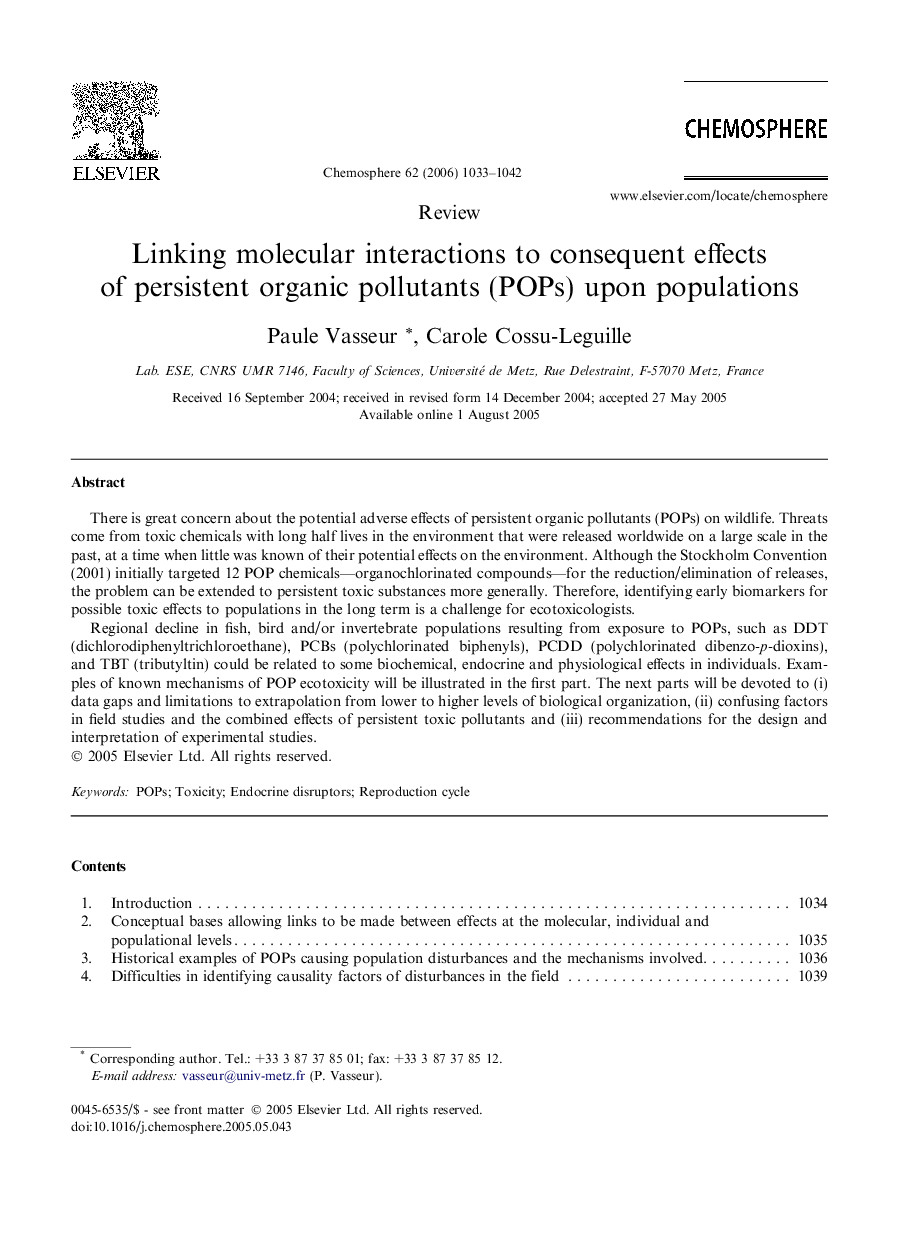| کد مقاله | کد نشریه | سال انتشار | مقاله انگلیسی | نسخه تمام متن |
|---|---|---|---|---|
| 4416869 | 1307803 | 2006 | 10 صفحه PDF | دانلود رایگان |

There is great concern about the potential adverse effects of persistent organic pollutants (POPs) on wildlife. Threats come from toxic chemicals with long half lives in the environment that were released worldwide on a large scale in the past, at a time when little was known of their potential effects on the environment. Although the Stockholm Convention (2001) initially targeted 12 POP chemicals—organochlorinated compounds—for the reduction/elimination of releases, the problem can be extended to persistent toxic substances more generally. Therefore, identifying early biomarkers for possible toxic effects to populations in the long term is a challenge for ecotoxicologists.Regional decline in fish, bird and/or invertebrate populations resulting from exposure to POPs, such as DDT (dichlorodiphenyltrichloroethane), PCBs (polychlorinated biphenyls), PCDD (polychlorinated dibenzo-p-dioxins), and TBT (tributyltin) could be related to some biochemical, endocrine and physiological effects in individuals. Examples of known mechanisms of POP ecotoxicity will be illustrated in the first part. The next parts will be devoted to (i) data gaps and limitations to extrapolation from lower to higher levels of biological organization, (ii) confusing factors in field studies and the combined effects of persistent toxic pollutants and (iii) recommendations for the design and interpretation of experimental studies.
Journal: Chemosphere - Volume 62, Issue 7, February 2006, Pages 1033–1042